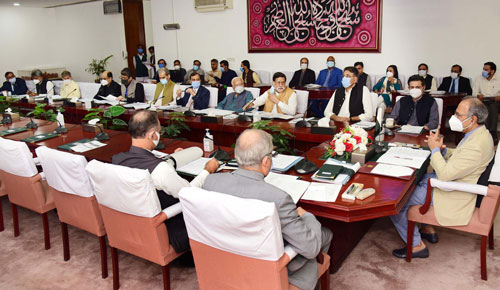Staff Reporter
Islamabad
A webinar titled “Stabilizing the Economy through Realistic Reforms” was held on 20th August 2020 by the Karachi Council on Foreign Relations. KCFR Chairman Ikram Sehgal introduced the guests, Dr. Abdul Hafeez Shaikh, Finance Advisor to the Prime Minister as the Plenary speaker and Dr. Rashid Amjad, Director of Graduate Pakistan Institute of Development Economics who shared his views on Pakistan’s economy.
Dr. Abdul Hafeez Shaikh said when this government took over there were bad signs bordering on crisis. With both external and domestic front difficulties and Pakistan was unable to merge with the international economy. To avoid complete default bold decisions were taken. Government expenditures were cut down, i.e. salary of cabinet members, other senior officials, etc. This started having good results, the tax side was moving at about 7% per year, so we were headed for a 4.5 – 4.7 trillion revenue collections.
In the two years we paid Rs. 5 trillion on loans that were borrowed earlier. Because of our policy of curtailing imports and increase exports the current account deficit came down from 20 bn to only 3 bn. IMF lauded us for our success and WB listed us among top 10 performers for reducing cost of doing business.
He said that a Rs. 1241 billion stimulus package was started and more than 16 million families were given Rs. 12000 support each which helped sustain them through this period. 1.3 million Jobs were safeguarded from shutdown. Small entrepreneurial programme was started in construction industry that gave massive concessions, etc.
All this was done to generate economic activity. This government trying to help people and many initiatives were taken. Cement sales increased 33%, petrol and diesel consumption 10 to 15%increased by 55%, fertilizer sales by about 22%, tractor sales have also risen, remittances were US$2.8 bn, highest in history while FBR collected 300 bn rupees in July which is 23% higher than their internal target. But we have to build on this.
Dr. Rasheed Amjad said from 1950 to 1980 Pakistan was among the ten fastest growing economies, but during last 30 years macroeconomic stability was not achieved. Economies like BD have a higher per capita GP in Dollar terms as also in purchasing power parity, similar India has almost double that compared to us.










